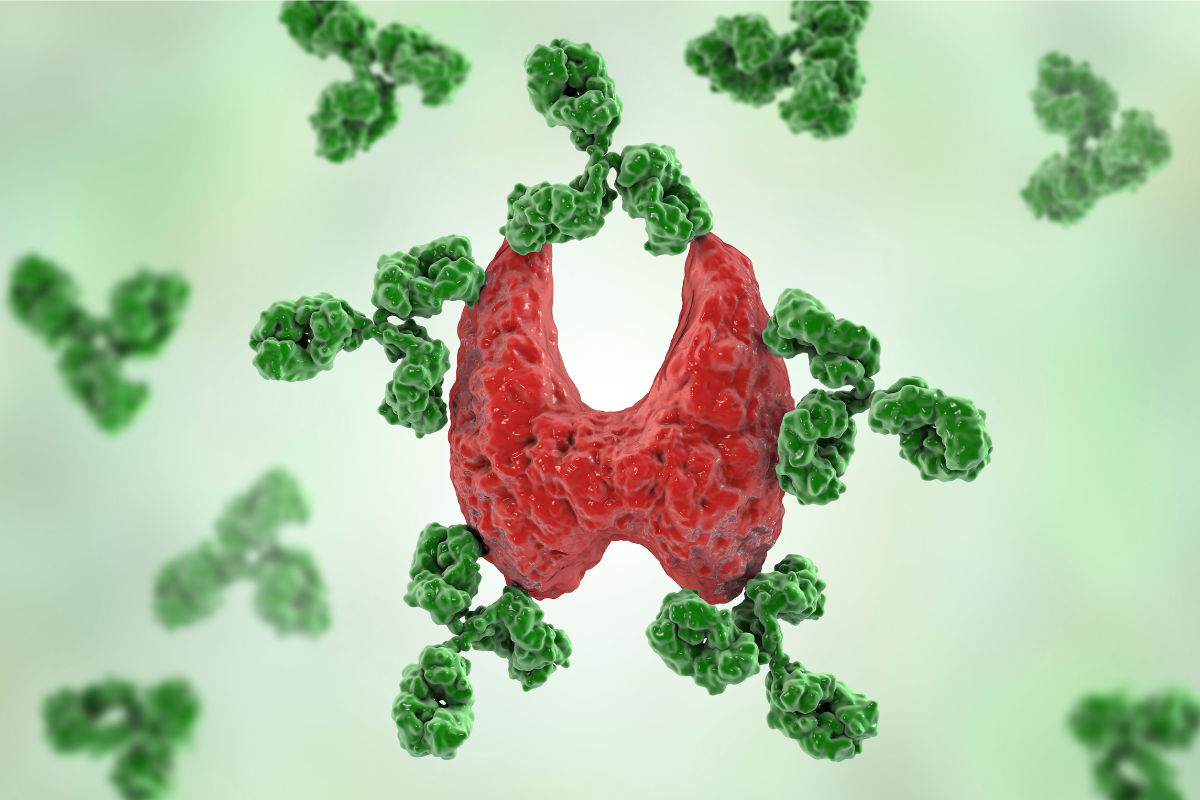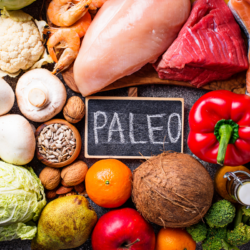Hashimoto’s thyroiditis is a common autoimmune disease. Today we look at a dietary approach that has attracted a lot of interest – the Paleo A.I.P or Autoimmune Protocol diet. Could it be the missing piece in the management of Hashimoto’s thyroiditis?
What is Hashimoto’s Thyroiditis?
Hashimoto’s thyroiditis is an autoimmune disease in which the body’s immune system attacks the thyroid gland. But what exactly does this mean? Let’s explore.
Common symptoms of Hashimoto’s Thyroiditis
From fatigue to weight gain, the symptoms of Hashimoto’s thyroiditis can be varied and disabling. Understanding these symptoms is a crucial step in managing the disease.
What is the Paleo A.I.P. diet?
You’ve heard of the Paleo diet, but what about the A.I.P. diet? Here, we’ll explore the specific details of the Autoimmune Protocol and how it can benefit people with autoimmune diseases.
Key principles of the A.I.P Paleo diet
The A.I.P diet is not your usual Paleo diet. It has a stricter set of guidelines specifically designed for people with autoimmune diseases. But don’t let the word ‘strict’ put you off. Once you understand its basic principles, everything will be easier!
Can Hashimoto’s Thyroiditis be cured with A.I.P?
In fact, this specific dietary approach aims to reduce inflammation in the body and minimise the symptoms of autoimmune diseases. What does it do? Well, it focuses on eating anti-inflammatory and nutritious foods while eliminating those that could provoke immune reactions.
What’s more, the Paleo A.I.P diet eliminates foods that are potentially irritating to the gut, which can help repair the intestinal lining and improve gut health. Why is this important? Well, poor gut health can contribute to systemic inflammation, which can worsen the symptoms of Hashimoto’s Thyroiditis.
In addition, the Paleo A.I.P diet encourages the consumption of foods rich in nutrients necessary for thyroid function. These nutrients include selenium, zinc, iodine, and vitamins A, E and D. It is important to note that the Paleo A.I.P diet is not a miracle solution. It does not eliminate Hashimoto’s Thyroiditis. However, it can help manage symptoms and improve quality of life.
Studies on the Paleo A.I.P diet and Hashimoto’s Thyroiditis
Although there are not many specific studies on the Paleo A.I.P diet and Hashimoto’s Thyroiditis, some research suggests that this diet can help manage the symptoms of autoimmune diseases. For example, a 2019 study published in the Journal of the American Medical Association found that participants who followed the Paleo A.I.P diet for nine weeks saw a significant improvement in their symptoms. This included a reduction in fatigue, joint and muscle pain, and an improvement in quality of life.
Another 2017 study published in “Inflammatory Bowel Diseases” showed that the Paleo A.I.P diet can help reduce inflammation and improve gut health, which could be beneficial for people with Hashimoto’s Thyroiditis. In conclusion, although further research is needed, existing studies suggest that the Paleo A.I.P diet can have a positive impact on managing the symptoms of Hashimoto’s Thyroiditis.
The phases of the Paleo A.I.P diet
The A.I.P diet, like the Paleo diet, consists of two major phases:Elimination and Reintroduction. These phases play a crucial role in managing your individual response to certain foods.
The elimination phase:
The first phase is Elimination, which aims to remove all foods and medications that can potentially cause intestinal inflammation, an imbalance between good and bad bacteria in the digestive system, or an immune response. These foods include cereals, legumes, nuts and seeds, solanaceous vegetables (such as tomatoes, aubergines, peppers and potatoes), eggs and dairy products. Tobacco, alcohol, coffee, refined vegetable oils, food additives, refined sugars and certain medicines such as non-steroidal anti-inflammatory drugs (NSAIDs) should also be avoided.
During this phase, the consumption of fresh, nutrient-richfoods, minimally processed meats products fermented products and bone broth. Lifestyle factors such as stress, sleep and physical activity should also be improved. You should maintain the Elimination phase until you notice a marked reduction in your symptoms. On average, this phase lasts from 30 to 90 days, but some people can see an improvement as early as 3 weeks.
The reintroduction phase
When you notice a measurable improvement in your symptoms and general well-being, you can begin the Reintroduction phase. During this phase, you will gradually reintroduce the foods you have been avoiding into your diet. Each food is introduced one at a time, according to your tolerance. The aim of this phase is to identify the foods that contribute to your symptoms and to reintroduce all the foods that do not, while continuing to avoid those that do. This gives you the widest variety of foods that your body can tolerate.
Examples of Paleo A.I.P meals
- Breakfast: Banana and spinach smoothie with a tablespoon of quality collagen powder.
- Lunch: Grilled chicken salad with a variety of colourful vegetables (carrots, courgettes, red cabbage) and an extra virgin olive oil dressing.
- Dinner: Grilled salmon fillet served with sweet potato purée with coconut cream and an assortment of steamed vegetables.
- Snacks: Fresh fruit and raw vegetables are excellent options for Paleo A.I.P. snacks.
It’s important to note that food tolerance can change over time. Therefore, you may want to consider repeating the reintroduction test for foods that initially failed the test from time to time.
How is Hashimoto’s thyroiditis managed with A.I.P?
Hashimoto’s thyroiditis, an autoimmune disease that affects the thyroid gland, can present a variety of uncomfortable symptoms that disrupt daily life. Dietary changes, such as the Autoimmune Protocol (AIP) diet, can play a crucial role in managing these symptoms.
The AIP diet, also considered to be a stricter version of the paleo diet, focuses on eliminating potentially inflammatory foods. And it does this while favouring nutrient-rich foods. The aim of this diet is to reduce inflammation in the body and regulate the immune response, which can help relieve the symptoms associated with Hashimoto’s thyroiditis.
Here’s how the AIP diet can benefit the day-to-day management of Hashimoto’s thyroiditis:
- Reducing inflammation: By eliminating pro-inflammatory foods (such as grains, legumes, nuts and seeds, solanaceous vegetables, eggs, dairy products, alcohol, coffee, refined oils and food additives), the AIP diet aims to minimise systemic inflammation, a key factor in autoimmune diseases such as Hashimoto’s thyroiditis.
- Immune system regulation: By encouraging the consumption of fresh, nutrient-rich foods, the AIP diet promotes a more balanced immune system. This can help minimise the excessive immune responses that are characteristic of autoimmune diseases.
- Identifying food triggers: The AIP diet includes a reintroduction phase, during which foods are gradually reintroduced into the diet. This can help to identify specific foods that exacerbate Hashimoto’s thyroiditis symptoms, enabling better management of symptoms on a day-to-day basis.
- Improving intestinal health: Fermented foods and bone broth, which are encouraged in the AIP diet, can promote intestinal health. A healthy gut is crucial for a proper immune response and can help manage the symptoms of Hashimoto’s thyroiditis.
- Supporting general wellbeing: By focusing on improving sleep, stress management and physical activity, the AIP diet supports a healthier lifestyle in general. These factors can all contribute to better management of Hashimoto’s thyroiditis symptoms.
- Konijeti GG, Kim N, Lewis JD, et al. Efficacy of the Autoimmune Protocol Diet for Inflammatory Bowel Disease. Inflamm Bowel Dis. 2017;23(11):2054-2060. doi:10.1097/MIB.0000000000001221.
- Abbott RD, Sadowski A, Alt AG. Efficacy of the Autoimmune Protocol Diet as Part of a Multi-disciplinary, Supported Lifestyle Intervention for Hashimoto’s Thyroiditis. Cureus. 2020;12(4):e7568. doi:10.7759/cureus.7568.







